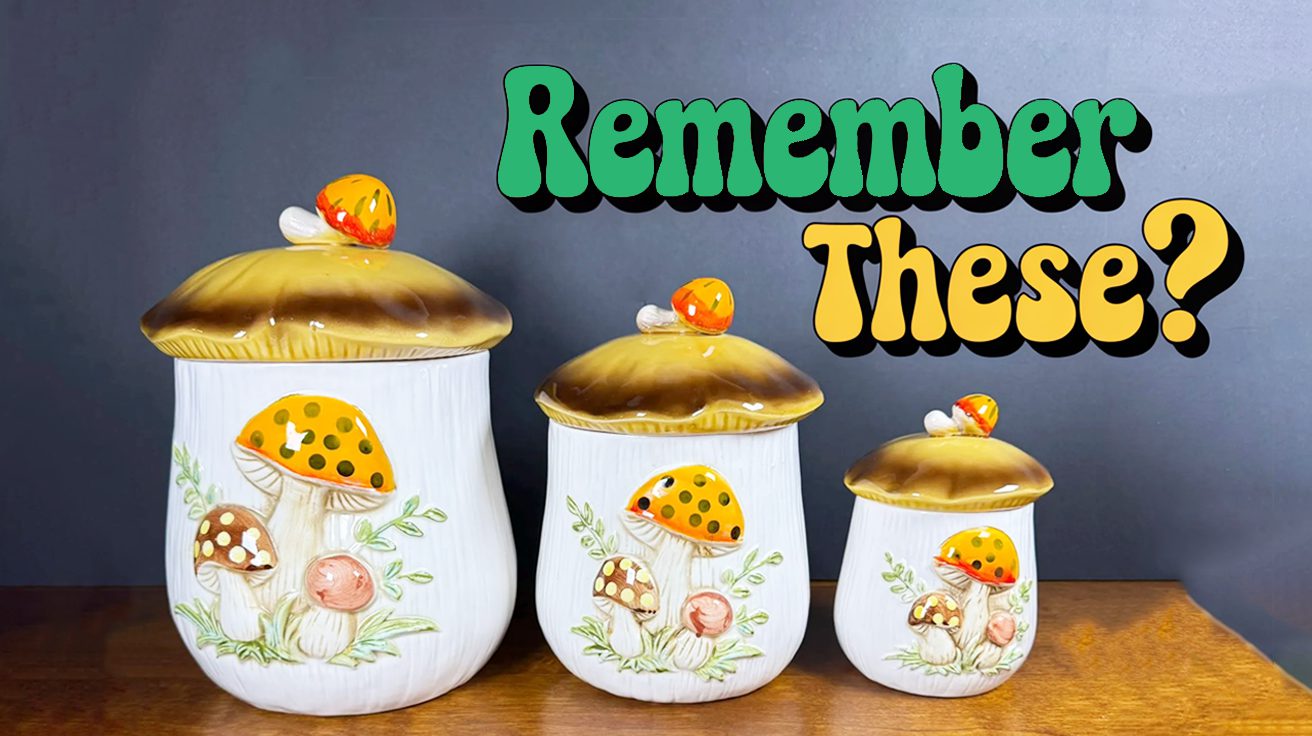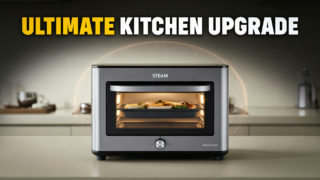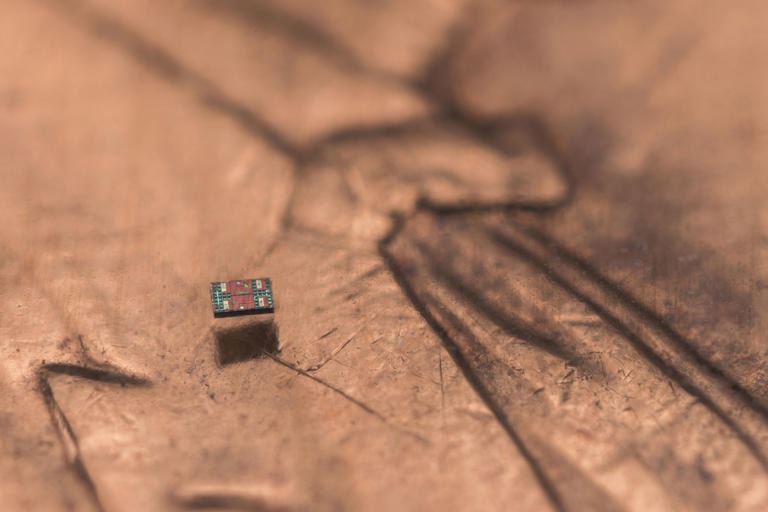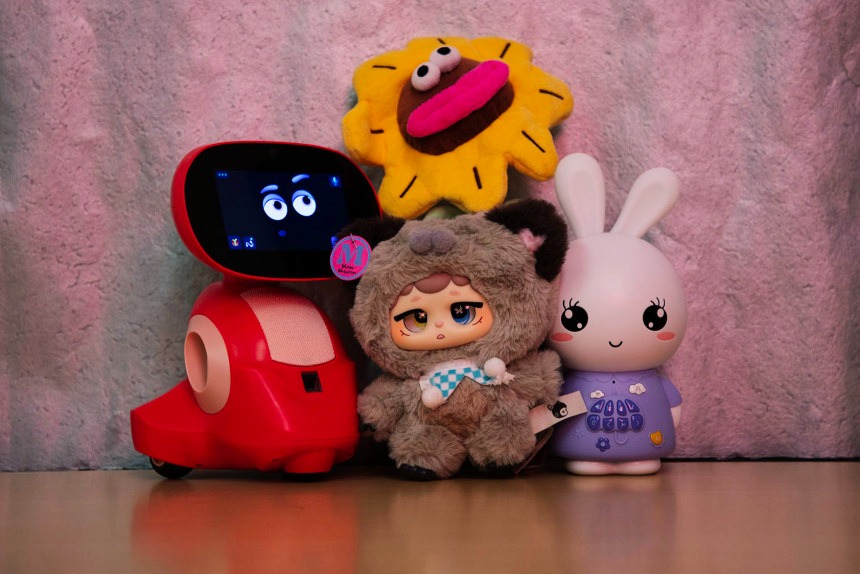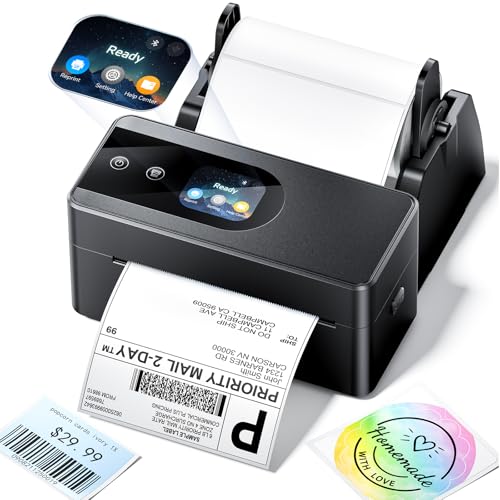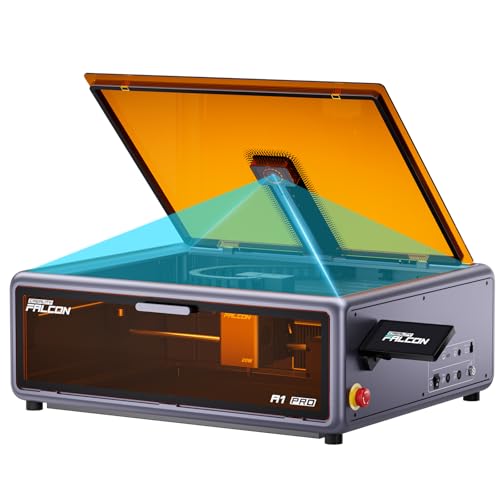The 1970s kitchen stands as the original smart home command center, where avocado green appliances formed retro monuments alongside harvest gold cookware. This wasn’t ordinary equipment – it was revolutionary hardware that redefined how families interfaced with their food ecosystem.
The 70s introduced significant upgrades to the kitchen stack: CorningWare and Pyrex withstanding thermal extremes like today’s rugged smartphones, Tupperware reinventing food preservation like cloud storage before the cloud existed. These analog innovations continue to shape modern kitchen design and fetch serious collector prices in today’s vintage marketplace.
21. Oster Ice Crusher

For those seeking next-level beverage upgrades, the Oster ice crusher delivered tactile feedback unmatched by modern touchscreens. That satisfying mechanical crunch as ice yielded beneath the lever created the original ASMR experience. This analog processor converted standard ice cubes into premium crushed output like a primitive file converter, elevating every summer drink to luxury status.
The manual interface demanded actual muscle power – no batteries, no plugs, just pure mechanical advantage reminiscent of vintage film cameras. Everyone clamored for hands-on time with this device, despite (or because of) the physical effort involved. Flat soda or boring beverages can ruin a summer gathering, but this manual marvel enhances ordinary drinks with resort-worthy refreshment after just a few satisfying cranks. Vintage models typically sell for $20-60 on collector sites, far less expensive compared to the best modern home appliances.
20. Tupperware

Before digital solutions revolutionized data management, Tupperware containers solved the leftovers dilemma with genuine innovation. The stackable design featured a satisfying air-purge system (that iconic “burp” seal) ensuring long-term content integrity – technology invented by Earl S. Tupper and patented in 1949 after drawing inspiration from paint can lids. Meanwhile, Tupperware parties established social networking and viral marketing in living rooms decades before Zuckerberg entered the scene.
Available in now-iconic avocado green and mustard yellow colorways, premium models like Calier bowls featured Starburst pattern lids that would look perfectly at home in a modern Apple Store. The airtight seal technology keeps Tuesday’s dinner fresh until Friday night with reliability comparable to how password managers protect digital credentials across multiple platforms.
19. Betty Crocker Recipe Card Library

Long before Pinterest existed, the Betty Crocker recipe card library provided an offline database housed in a plastic container – complete with analog sorting system and zero loading times. This physical collection delivered culinary algorithms before digital recommendations existed, offering everything from quick weeknight meal solutions to complex weekend cooking projects without a single targeted ad interruption.
Despite lacking Ctrl+F capabilities, the manual search function provided a tactile browsing experience more satisfying than infinite scroll. These vintage collections now sell for $20-50 on specialty marketplaces. When mealtime monotony strikes, these forgotten classics and quirky retro dishes deliver culinary time travel that breaks predictable dinner routines.
18. Fiesta Dinnerware

The 70s version of customizable smartphone cases came in the form of Fiesta dinnerware. During its comeback period, the collection featured mango red and Turf green colorways that made meals visually striking long before Instagram existed. Most remarkable was the intentional mismatching – the tabletop equivalent of using different wallpapers on your lock and home screens.
This dinnerware system encouraged personal expression decades before tech companies marketed customization as a selling point. Vintage pieces from the 70s revival now fetch $15-200 per piece on collector sites, with rare colors reaching premium territory at up to $500. Hosting a dinner party with these bold plates turns even takeout pizza into a vibrant social media moment waiting to happen.
17. Sears Merry Mushroom Bread Box

The Merry Mushroom bread box functioned as the original snack notification center when hunger struck without warning. Its distinctive storage concept combined countertop decoration with practical functionality similar to a gaming PC with RGB lighting that actually holds your games. The nostalgic mushroom design preceded Mario’s iconic power-ups by nearly a decade.
Beyond bread storage, these containers typically housed everything from Twinkies to cookie stashes, creating the kitchen equivalent of hidden Easter eggs in video games. Functioning specimens command $40-120 on collector sites today. With minimal effort, this iconic mushroom imagery converts plain kitchen counters into conversation pieces more effectively than changing desktop wallpaper refreshes a tired computer setup.
16. Electric Countertop Can Opener

Before smart homes existed, electric can openers represented kitchen automation at its finest. These countertop appliances eliminated manual effort with an impact similar to robotic vacuums, delivering perfectly opened cans without hand fatigue from mechanical alternatives. Operation was simple – essentially running an “open_can.exe” program with a single button press.
Proudly displayed on counter real estate like today’s RGB gaming setups, these devices signaled household technological advancement. Modern collectors pay $10-40 in vintage markets for these nostalgic appliances – their value driven more by nostalgia than utility, similar to vintage iPods nobody uses but everyone recognizes. During large gatherings, these retro workhorses process multiple cans in sequence with consistent performance that matches your favorite playlist’s reliable background music.
15. Pyrex Mixing Bowls and Bakeware

Vivid and eye-catching like contemporary gaming setups, Pyrex bowls pioneered kitchen aesthetics long before social media. The orange, avocado green, and golden yellow colorways created visual impact against neutral countertops similar to vibrant pixels on modern OLED displays. With storage efficiency rivaling today’s folding phones, the stackable design complemented the Butterfly Gold and Spring Blossom patterns that would make current product designers envious.
Extreme temperature resistance exceeds even advanced gaming PC cooling systems. Particularly desirable colors and limited edition patterns now command premium prices in vintage markets – common sets typically sell for $100-200, while rare patterns in excellent condition reach $200-500. No modern technology transitions between freezer and oven environments as seamlessly as these glass champions handle thermal extremes without compromise.
14. Sear’s Merry Mushroom Canisters

The earth-toned emoji set of the 70s kitchen arrived in the form of Sears’ Merry Mushroom canisters. Decorated with mushroom icons against cream backgrounds with orange, brown, and green accents, these ceramic containers presaged nature-themed digital stickers by decades. The product line grew more rapidly than app features, eventually including salt shakers and cookie jars that created immersive themed environments across kitchen countertops.
Today’s cottagecore aesthetic owes much to these early design pioneers that regularly capture attention on social platforms. Contemporary collectors invest $30-100 for basic canister sets, while complete kitchen collections reach up to $400 from enthusiasts. Visitors entering your kitchen immediately notice the distinctive mushroom design, which adds personality to ordinary counters in ways similar to how custom wallpapers personalize digital workspaces.
13. Fondue Set

Communal dining experiences pioneered by fondue sets paralleled how multiplayer gaming later revolutionized solo entertainment. These social cooking platforms created interactive mealtimes where participants gathered around a shared heat source, dipping various items into central containers of cheese, chocolate, or oil. This arrangement generated social engagement metrics that modern restaurant apps still attempt to quantify.
The ambient glow from heating elements (traditionally spirit lamps in authentic versions) established an atmosphere comparable to customizable RGB lighting in gaming environments. Vintage models typically sell for $20-60 for basic sets, while premium brands like Le Creuset reach $80-120. When date night loses its spark through repetitive restaurant visits, these interactive cooking stations convert ordinary ingredients into memorable culinary adventures that surpass conventional dining experiences.
12. Melmac Melamine Dinnerware

Virtually unbreakable by design, Melmac represents the Nokia 3310 of the dinnerware world. These thermoset plastic plates withstood impacts that would destroy both ceramic plates and modern smartphone screens, making them ideal for outdoor settings where durability trumped aesthetics. The avocado green and burnt orange color selection evoked a distinctive personality similar to custom ROM themes on Android devices.
Material resistance to scratches would impress even Gorilla Glass engineers today. The secondary market values vintage Melmac at $10-30 per piece, with designer collections from Russel Wright or Branchell reaching $75-150 complete. Outdoor entertaining presents unique challenges, but these lightweight champions handle rough transportation and casual dining scenarios with reliability matching waterproof action cameras.
11. Corningware Casserole Dishes

Under conditions that cripple modern electronics, Corningware casseroles thrive with remarkable thermal resistance. These kitchen vessels managed temperature extremes beyond what contemporary devices can handle, featuring the iconic Spice of Life pattern with decorative vegetables and herbs that served as an early form of skeuomorphic interface design. Above them, glass lids functioned as the first transparent monitoring displays.
The core innovation was Pyroceram – an advanced material science originally developed for missile nose cones, similar to how smartphone glass evolved from military technology. Family dinner preparation on hectic weeknights becomes significantly easier with these thermal workhorses that move seamlessly from freezer to oven to table, allowing focus on hungry children rather than constant cookware management.
10. Tupperware Plastic Pitcher with a Swirling Lid

This notoriously problematic interface design caused countless spills and leaks. Essentially Generation X’s first experience with glitch-prone user interfaces, the Tupperware pitcher featured a troublesome lid mechanism – with a rotating wheel seemingly engineered to maximize spill potential – creating Kool-Aid disasters comparable to coffee-on-laptop catastrophes. The permanently orange-stained plastic documented each failure like hardcoded crash logs.
Permanently stationed in refrigerator door compartments, these containers served as the original quick-hydration stations long before smart water bottles existed. Vintage examples now sell for $8-25, with unusual colors commanding slight premiums similar to limited-edition tech accessories. During hot weather gatherings when constant refreshment becomes essential, this retrofuturistic beverage system keeps everyone hydrated without requiring constant kitchen trips.
9. Black and Decker Electric Knife

Perfect carving became effortless with the Black and Decker electric knife – essentially a handheld Dremel tool designed for protein. Long before unboxing videos made cutting satisfying to watch, this dual-blade power tool produced distinctive buzzing while slicing through holiday turkeys with laser-like precision.
Beyond kitchen applications, this versatile tool became the original maker device, equally effective for cutting craft foam and various DIY materials. Secondary markets value vintage models at $10-35 – considerably less than many modern kitchen gadgets, despite superior specialized performance. For those interested in today’s options for home butchery, check out some of the best meat grinders available now.
8. McCormick Spice Rack

Accessing seasonings efficiently became possible through McCormick’s revolutionary spice organization system. This carousel design provided immediate flavor access without cabinet rummaging, accommodating both everyday essentials and rarely used specialty spices that occupied valuable storage space like seldom-opened apps.
Following patterns that continue with software updates today, users habitually ignored expiration notifications – anything occupying rack space eventually found its way into meals, regardless of age. Collectors building analog kitchen systems currently pay $15-45 for vintage units. Just as finding forgotten music in abandoned playlists brings unexpected joy, the rotating mechanism reveals overlooked spices that spark culinary creativity and experimentation.
7. Lennox Temper-ware

Balancing formality with practicality, Lennox Temper-ware offered an elegant solution to the formal/casual dinnerware dilemma. Similar to versatile hybrid devices, these plates delivered upscale presentation with everyday convenience through oven-safe and dishwasher-compatible construction. Distinctive designs, including Mardi and Fancy Free, featured botanical patterns that align perfectly with contemporary plant-focused aesthetics.
The perfect equilibrium between premium features and practical durability makes this dinnerware comparable to multipurpose tablets handling both professional projects and entertainment needs. Collector interest remains strong, with vintage sets valued at $100-200 depending on pattern and completeness. Formal entertaining poses risks to delicate china, but these resilient plates manage executive-level presentation while withstanding even chaotic cleanup situations.
6. Revere Ware Copper Bottom Cookware

Exceptional heat distribution distinguished Revere Ware’s innovative design from standard cookware options. Combining stainless steel bodies with copper bottoms created material integration similar to how premium devices blend components for optimal performance. The mirror-polished finish wasn’t merely decorative – it represented the kitchen status symbol equivalent to displaying a titanium laptop in today’s coffee shops.
Maintenance protocols mirrored modern tech care routines. Users regularly polished copper surfaces to maintain optimal performance, similar to clearing cache memory in contemporary devices. Uneven cooking frustrates many home cooks using inferior equipment, but Revere Ware’s copper-bottom technology distributes heat with remarkable precision that transforms cooking novices into confident culinary creators.
5. GE Avocado Green and Harvest Gold Appliances

A design revolution emerged when GE introduced avocado green and Harvest Gold finishes decades before Apple established device colors as personality indicators. These distinctive colorways appeared when beige computers and silver smartphones remained far in the future. Rather than subtle accents, these were bold, room-defining statements comparable to using bright red laptops amid today’s sea of neutral devices.
Feature innovations included side-by-side refrigerators with groundbreaking ice dispensers and stoves featuring control panels requiring substantial finger strength – the mechanical keyboard enthusiasts of their era. Modern smart appliances with limited lifespans pale in comparison to these durable machines that operated flawlessly for thirty years with minimal maintenance and without software updates.
4. George Briard Glassware

Function merged perfectly with form in George Briard’s revolutionary glassware designs. Just as Steve Jobs elevated computing aesthetics, these weren’t ordinary drinking vessels but artistic pieces featuring signature gold leaf accents and geometric patterns that elevated everyday beverages into special occasions. Before AirPods and Apple Watches indicated social position, these glasses served as status markers at sophisticated gatherings.
Current vintage marketplaces value these analog luxury items substantially – $100 for basic sets to $1,000+ for rare collections – comparable to first-generation collectible technology. Presentation matters significantly when hosting important dinners, and these specialty glasses transform ordinary beverages into Instagram-worthy experiences that guests remember long after forgetting what they actually consumed.
3. Corelle Dinnerware

Near-indestructible performance made Corelle dinnerware the solution for households plagued by broken dishes. The innovative material called Vitrelle, a three-layer glass laminate, created virtually unbreakable plates when most products failed with minimal handling. Iconic patterns including Butterfly Gold with its daisy motifs and Spring Blossom featuring delicate green flowers became the original design templates that defined an aesthetic era.
Functionality extended beyond durability to versatility – moving seamlessly between microwave and table similar to how smartphones switch between applications. Collector markets demonstrate variable pricing for complete vintage sets with intact patterns – ranging from $20 to $350 based on condition, pattern desirability, and completeness. Authentic vintage kitchen equipment with practical contemporary utility is rare, but these nearly indestructible plates deliver nostalgic design with everyday reliability.
2. Crockpot (Slow Cooker)

“AFK cooking” arrived decades before the term existed thanks to the innovative Crockpot. This groundbreaking appliance implemented slow-cooking algorithms that transformed tough proteins into tender meals while users were completely absent. No other innovation so dramatically changed working families’ relationship with meal preparation – essentially functioning as the first autonomous kitchen assistant.
The “set and forget” approach pioneered user experience concepts now applied across product categories from robotic vacuums to smart thermostats. Operational vintage models from the 1970s command $25-75 in collector marketplaces, with iconic avocado green and harvest gold examples particularly valued. Budget ingredients become restaurant-quality meals with minimal effort through the Crockpot’s consistent performance – essentially the analog predecessor to today’s meal subscription services.
1. Farberware Electric Percolator

Morning coffee rituals centered around the Farberware percolator – essentially creating the original beverage livestream. This stainless steel appliance produced a characteristic bubbling soundtrack as instantly recognizable as streaming service intros, while delivering robust coffee that puts pod-based systems to shame.
Depending on condition, these reliable brewing systems currently sell for $25-75 on specialized marketplaces, with many operating flawlessly after decades of service. Early mornings without proper coffee feel incomplete for many households, and this chrome-finished classic delivers consistently bold results with mechanical dependability that highlights the planned obsolescence of contemporary coffee makers.


